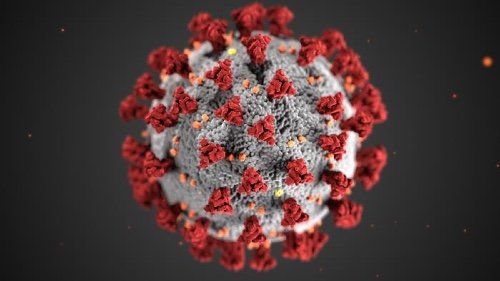Managing COVID-19: Experts Share Their Experiences
Six industry leaders discuss coping strategies for workflow, imaging volume, and revenue.

Over the past six weeks, you’ve no doubt seen a litany of impacts on your practice from the continued COVID-19 outbreak. Changes to your imaging volume, your revenue, and your daily workflow have likely been significant, and you might be wondering about the best ways to navigate this crisis and keep your practice on track as efficienctly as possible.
In an article published April 27 in the Journal of the American College of Radiology, six industry experts teamed together, offering up their experiences and their coping strategies. The group, led by Christoph Lee, M.D., professor of breast imaging at the University of Washington in Seattle, represented a variety of practice types, both private and academic, of a many sizes, types, and employment models.
“As our practices prioritize managing the acutely ill as an initial response to COVID-19, we begin to digest the management implications,” Lee’s team wrote.
The experts included:
- Mahmud Mossa-Basha, M.D., from the University of Washington
- Michael Recht, M.D., from New York University Langone Health Systems
- David Kirsch, M.D., from Southern Radiology Consultants of Louisiana and Mississippi
- Robert Pyatt, M.D., from Wellspan-Summit Health in Pennsylvania
- Samit Patel, M.D., from Radiology, Inc., in Indiana
- Sabiha Raoof, M.D., from Jamaica and Flushing Hospital Medical Centers
These radiology leaders provided first-person perspectives for handling the COVID-19 crisis in three areas: workforce, imaging management, and revenue.
Workforce
When possible, even though each practice has kept some type of onsite presences operational, they all pivoted to at-home work, especially for those providers and staff who may have been at greater personal risk of COVID-19 or who had family members that might have been. Engaging your IT staff to support the move toward at-home work is critical in both private and academic practice, they noted.
For the onsite services, the groups reduced the number of providers in reading rooms, divided staff into teams to control cross-team virus exposure, and consolidated working hours to accommodate for ambulatory office closures and reduced imaging volumes.
Imaging Management
To determine which patients could safely have their imaging services delayed, the experts worked closely with referring physicians. In all instances, screening mammography was postponed, and some practices rescheduled other screening exams, including lung cancer and bone densitometry. Overall, however, most groups continued with diagnostic services, such as mammography, oncologic staging, and interventional oncology.
Revenue
Financial concerns loomed large over all the experts’ practices, but not everyone was able to tackle the problem in the same way. For example, some locations, such as Jamaica and Flushing, are too busy dealing with a heavy, critically ill patient volume, so the concerns about revenue have been pushed to the back burner. Other practices, though, discussed pulling some of their previous teleradiology work or outsourcing back in house. Others reported moonlighting to bolster the bottom line.
In addition, the academic practices reported eliminating faculty incentive payments for additional shifts, overtime, or internal moonlighting, and the private practices pointed to the federal grant and loan programs as options for sustaining finances during the outbreak.
While it’s prudent to continue thinking about ways to navigate the crisis and to plan for what the “new normal” will look like once cases begin to subside, the experts warned providers not to be complacent with practice management as the virus is continuing to spread.
“The practice-level maneuvers to manage extraordinary conditions remain salient as we, collectively, will be systemically stressed again,” the team wrote. “Heeding these lessons may lessen the impact of second waves of regional COVID-19 infections and future pandemics.”
The Reading Room Podcast: Emerging Trends in the Radiology Workforce
February 11th 2022Richard Duszak, MD, and Mina Makary, MD, discuss a number of issues, ranging from demographic trends and NPRPs to physician burnout and medical student recruitment, that figure to impact the radiology workforce now and in the near future.
New Collaboration Offers Promise of Automating Prior Authorizations in Radiology with AI
March 26th 2025In addition to a variety of tools to promote radiology workflow efficiencies, the integration of the Gravity AI tools into the PowerServer RIS platform may reduce time-consuming prior authorizations to minutes for completion.
Strategies to Reduce Disparities in Interventional Radiology Care
March 19th 2025In order to help address the geographic, racial, and socioeconomic barriers that limit patient access to interventional radiology (IR) care, these authors recommend a variety of measures ranging from increased patient and physician awareness of IR to mobile IR clinics and improved understanding of social determinants of health.
The Reading Room Podcast: Emerging Trends in the Radiology Workforce
February 11th 2022Richard Duszak, MD, and Mina Makary, MD, discuss a number of issues, ranging from demographic trends and NPRPs to physician burnout and medical student recruitment, that figure to impact the radiology workforce now and in the near future.
New Collaboration Offers Promise of Automating Prior Authorizations in Radiology with AI
March 26th 2025In addition to a variety of tools to promote radiology workflow efficiencies, the integration of the Gravity AI tools into the PowerServer RIS platform may reduce time-consuming prior authorizations to minutes for completion.
Strategies to Reduce Disparities in Interventional Radiology Care
March 19th 2025In order to help address the geographic, racial, and socioeconomic barriers that limit patient access to interventional radiology (IR) care, these authors recommend a variety of measures ranging from increased patient and physician awareness of IR to mobile IR clinics and improved understanding of social determinants of health.
2 Commerce Drive
Cranbury, NJ 08512
All rights reserved.